I am inquiring about two things. First I am having an ttf file and it is located in my macair drive. I do not want to add that file into my project structure. How can i import the True_type font from it. I have tried various ways to import it my Java program. e.g. public class TextFixer {
private static String[] names = { "iksswgrg.ttf" }; //this exists on my macair drive and i want to create font from it.
private static Map<String, Font> cache = new ConcurrentHashMap<String, Font>(names.length);
static {
for (String name : names) {
cache.put(name, getFont(name));
}
}
public static Font getFont(String name) {
Font font = null;
if (cache != null) {
if ((font = cache.get(name)) != null) {
return font;
}
}
String fName = "/fonts/" + name;
try {
InputStream is = TextFixer.class.getResourceAsStream(fName);
font = new Font("ttf", 0, 16);
//font = Font.createFont(Font.TRUETYPE_FONT, is);
} catch (Exception ex) {
ex.printStackTrace();
System.err.println(fName + " not loaded. Using serif font.");
font = new Font("serif", Font.PLAIN, 24);
}
return font;
}
2nd part is I want to create a String by using Graphics. First I need to have width that is of 130mm. The height of the displayed box will be the tallest character in the provided string. The font size is between 8 and 16. I have an enterprise project which take care of the height and size of the ttf. The problem i face is: I do not want to use swing/javafx libraries. I want to use Graphics library of Java, use Graphics2D to have a rectangle. How can i set its width to be precisely 130mm? Then I want to make that width flexible with according to the Font. I want to draw a string and the string should get adjusted/being flexible in the provided width. I am able to draw a string through g.drawString() but I am unable to see it on console. As I do not want to use Jframe or any Swing/javaFX libraries. I know this seems a bit long but I hope I have explained it well enough. I desperately need help. Please let me know if you guys can help me out here. Thanks in advance
